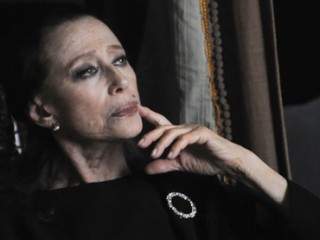
Maya Plisetskaya biography
Date of birth : 1925-11-20
Date of death : 2015-05-02
Birthplace : Moscow, Russia
Nationality : Russian
Category : Famous Figures
Last modified : 2023-11-20
Credited as : Ballet dancer, Galina Ulanova, Bolshoi Theater, Bolshoi Ballet
5 votes so far
Maya Plisetskaya: A Balletic Journey through Passion, Rebellion, and Eternal Legacy
Meet Maya Mikhailovna Plisetskaya, a Moscow-born ballet virtuoso who gracefully pirouetted her way into the annals of dance history, leaving an indelible mark as one of the 20th century's greatest ballerinas. Renowned not only for her extraordinary talent but also for her rebellious spirit, Maya's balletic prowess transcended borders, earning her recognition on the international stage.
Early Life and Ballet Beginnings
Maya's dance lineage is nothing short of extraordinary. Niece to Asaf Messerer and the Bolshoi ballerina Sulamith Messerer, and cousin to the esteemed designer Boris Messerer, she was destined for greatness. Her balletic journey commenced at the prestigious Bolshoi Ballet School in 1932, where she honed her skills under the guidance of Elisaveta Gerdt. Graduating in 1943, Maya joined the Bolshoi Ballet as a soloist, later refining her craft with the legendary Asaf Messerer.
Maya's exceptional technique propelled her to success, securing her a spot as a ballerina in 1945. With powerful and fluid physicality, she brought robust theatricality and passion to her roles, defying the traditional image of the ethereal Romantic ballerina. Her repertoire included iconic performances as Odette-Odile and Kitri, showcasing her versatility and artistry.
The Bolshoi Era and International Stardom
In 1959, Maya embarked on her first US tour with the Bolshoi, setting the stage for her meteoric rise. The retirement of the great Galina Ulanova in 1962 marked a pivotal moment as Maya assumed the role of prima ballerina, solidifying her status as a ballet luminary.
Maya's tenure with the Moscow company was not without its drama. A maverick at heart, she openly rebelled against the management, seeking new challenges on international platforms. Her artistic endeavors took her to esteemed institutions such as the Paris Opera Ballet, Ballet National de Marseilles, and Ballet of the 20th Century in Brussels.
Choreographic Brilliance and Cinematic Feats
Maya Plisetskaya wasn't just a mesmerizing dancer; she was also a trailblazing choreographer. In 1972, she unveiled her first ballet, "Anna Karenina," a poignant production set to the enchanting score of her husband, Rodion Shchedrin. This was only the beginning; she continued to create masterpieces like "The Seagull" (1980) and "Lady with a Lapdog" (1985), showcasing her artistic evolution.
Her foray into film was equally captivating. Maya starred in the 1961 cinematic rendition of "The Humpbacked Horse" and demonstrated her acting prowess in the Soviet adaptation of "Anna Karenina" (1968). Undoubtedly, her own ballet of the same name, filmed in 1974, stands as a testament to her multifaceted artistic expression.
Global Impact and Artistic Leadership
Beyond the stage, Maya Plisetskaya made significant contributions as a ballet director. From her tenure at the Rome Opera (1983-4) to her role as the artistic director of Ballet del Teatro Lirico Nacional in Madrid (1987-90), she shaped the global ballet landscape.
In 1988, Boston paid homage to the iconic dancer with an "Hommage à Plisetskaya," a testament to her enduring impact on the world of dance. Even in 1996, she continued to mesmerize audiences, dancing "The Dying Swan," her signature role, at a gala in her honor in St. Petersburg, a fitting tribute to a remarkable career.
Maya Plisetskaya's legacy lives on, a testament to the rebellious spirit and artistic brilliance that defined her journey. The Lenin Prize of 1964 was just one of the many accolades that adorned her illustrious career, solidifying her status as an eternal icon of the balletic world.
Maya Plisetskaya gracefully took her final bow on May 2, 2015, in Munich, Germany, at the age of 89.



















